During the First World War, the Dolomite mountains were torn apart by fighting. Literally.
As Italy and Austria fought over the region, summits were exploded for artillery placements, a network of tunnels were bored though the limestone, and a metallic web of cables and ladders were tethered to the peaks to allow easier movement of troops across the difficult terrain.
Over 100 years later, much of this ‘iron way’ still exists, and climbers with a taste for adventure can enjoy these via ferrata routes through the mountains.
Mercifully, the fells of the Lake District have been left largely untouched by the ravages of war. But that’s not to say they haven’t got scars of their own. Slate mining has been taking place in the area around the head of Buttermere since 1728, creating open quarries and cutting long tunnels into the surrounding hills.
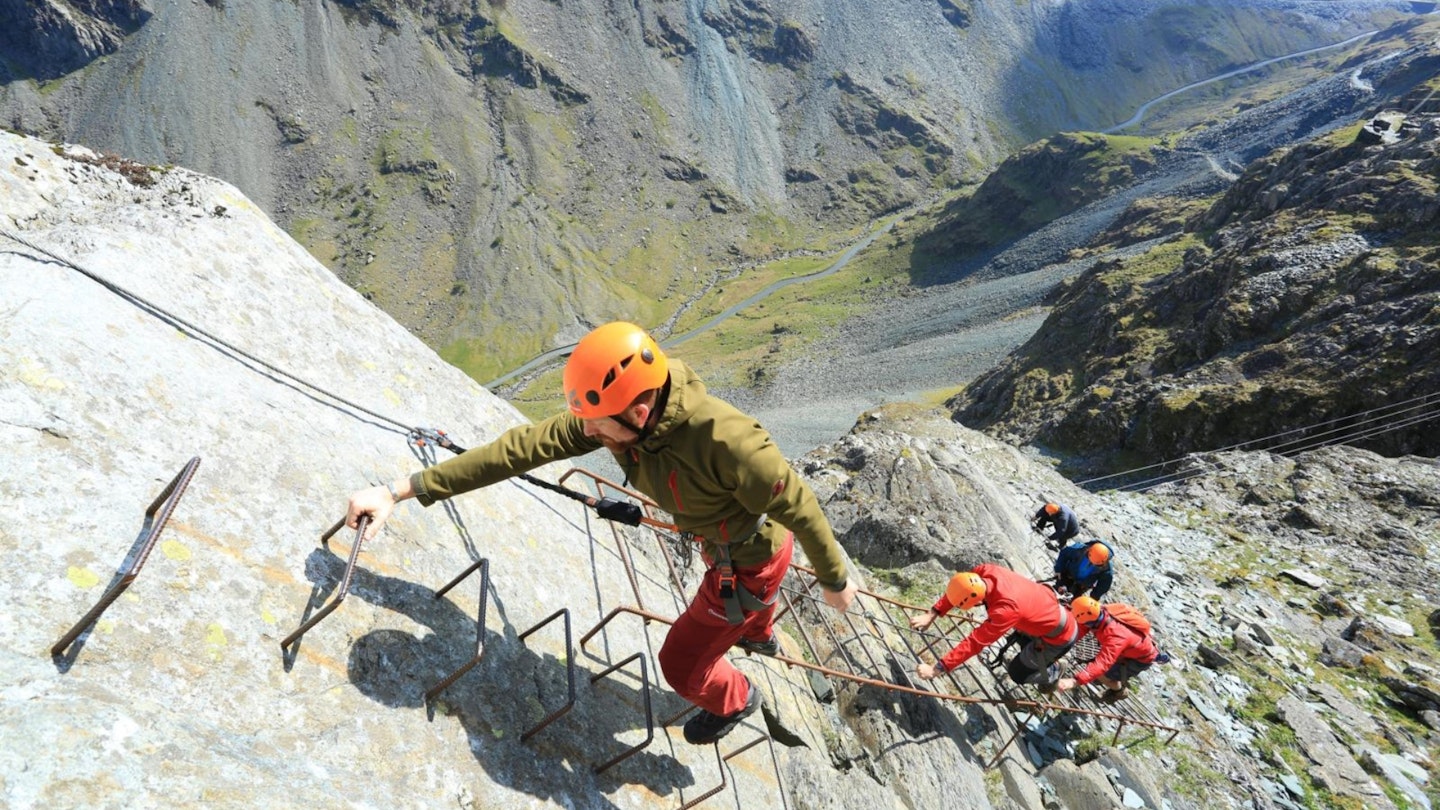
Today, Honister Slate Mine remains the last working slate mine in England, albeit on a smaller scale than in previous centuries. In 1997, the mine was relaunched as a tourist attraction and ten years later in 2007, it opened England’s first via ferrata.
In some ways it operates in much the same way as its continental originators; there are metal cables, ladders, bridges and even tunnels that allow you to explore the mountain – in Honister’s case the north face of Fleetwith Pike.
There are metal cables, ladders, bridges and even tunnels that allow you to explore the mountain
But it differs in that you can’t just turn up and clip in – you need to book onto a tour. There are two to choose from: the ‘Classic’, which is suitable for most ages and abilities (and won ‘Best Tourism Experience in the Lake District 2011’), and the Xtreme – a more challenging alternative, and the option that we booked onto to discover what via ferrata at Honister is all about.
Honister via Ferrata – we tried it, and loved it
We are standing in a room with a group of nervous-looking strangers. We’ve all checked-in and signed our lives away, and some of us have girded our loins with bacon butties and a cuppa in the café.
Tom, our efficient-looking guide, has introduced himself – a necessary formality before the rather intimate process of helping people into climbing harnesses – and is running us through the gear we’ll be using.
This includes the harnesses we’re wearing, the via ferrata sets and pulley wheels attached to them, and the helmets we’re strapping to our heads. With the safety briefing complete, it’s time to go.
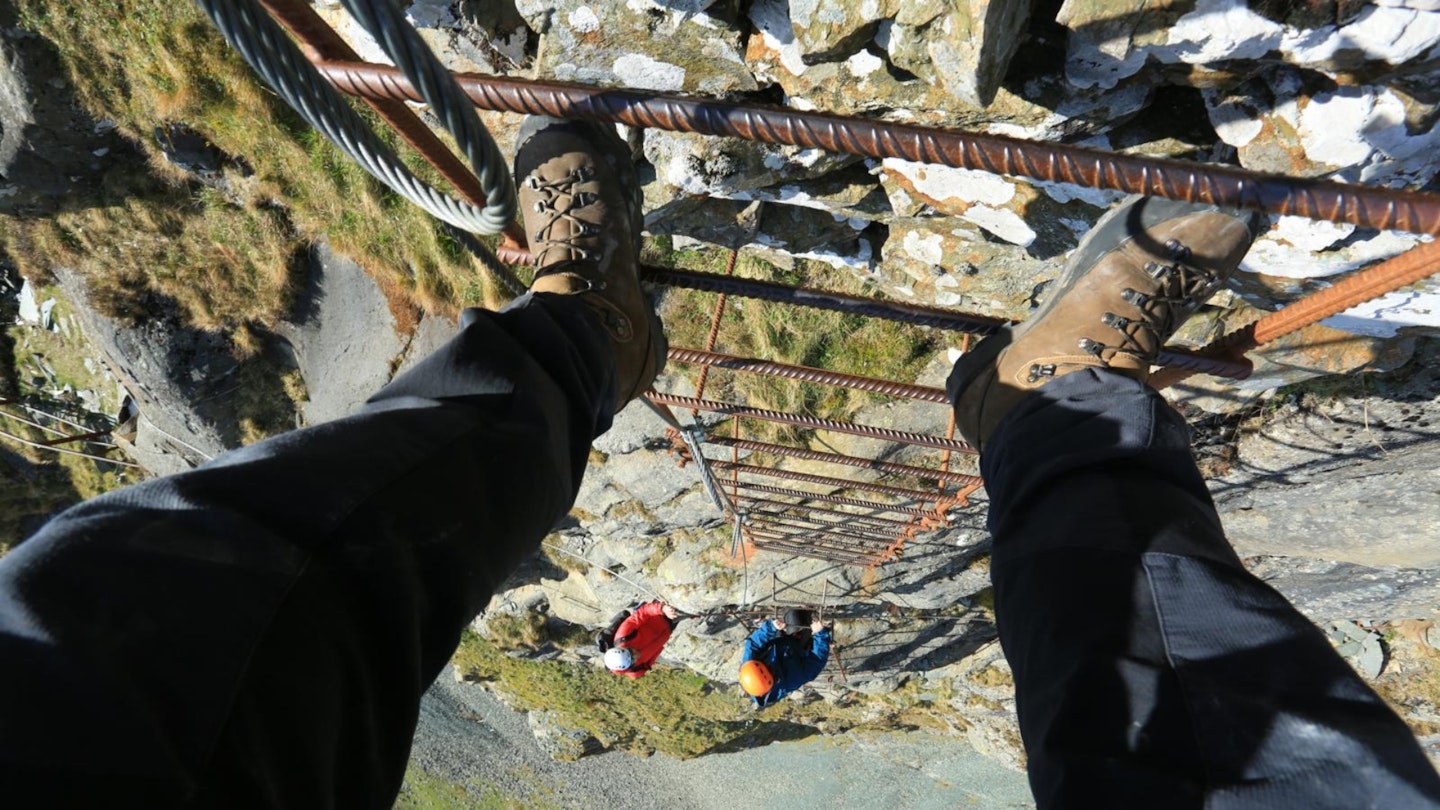
We troop out of the kit room and board what looks very much like a school bus. An odd start. With all aboard, the bus sets off up a slate-grey gravel track. We eye a steep ramp heading up Fleetwith Pike.
The gradient is such that walking it looks hard work, and going up it in a bus, terrifying. But the bus forks right and takes a shallower track, stopping shortly afterwards to deposit us on the edge of Honister crags with the tarmac road of the pass now some distance below us.
“Welcome to Mordor!” Tom exclaims as he swings open a large metal gate to the start of the adventure. We’re led into a low tunnel, where parallel cart rails, rusted orange metal and even the odd cart can be spotted in the dim light.
There are some 11½ miles of tunnels twisting through the innards of Fleetwith Pike, Tom tells us. Initially all the slate mining had been open cast quarrying, but in a pursuit for greater quantities of the finest Westmorland green slate the mine owners delved deeper.
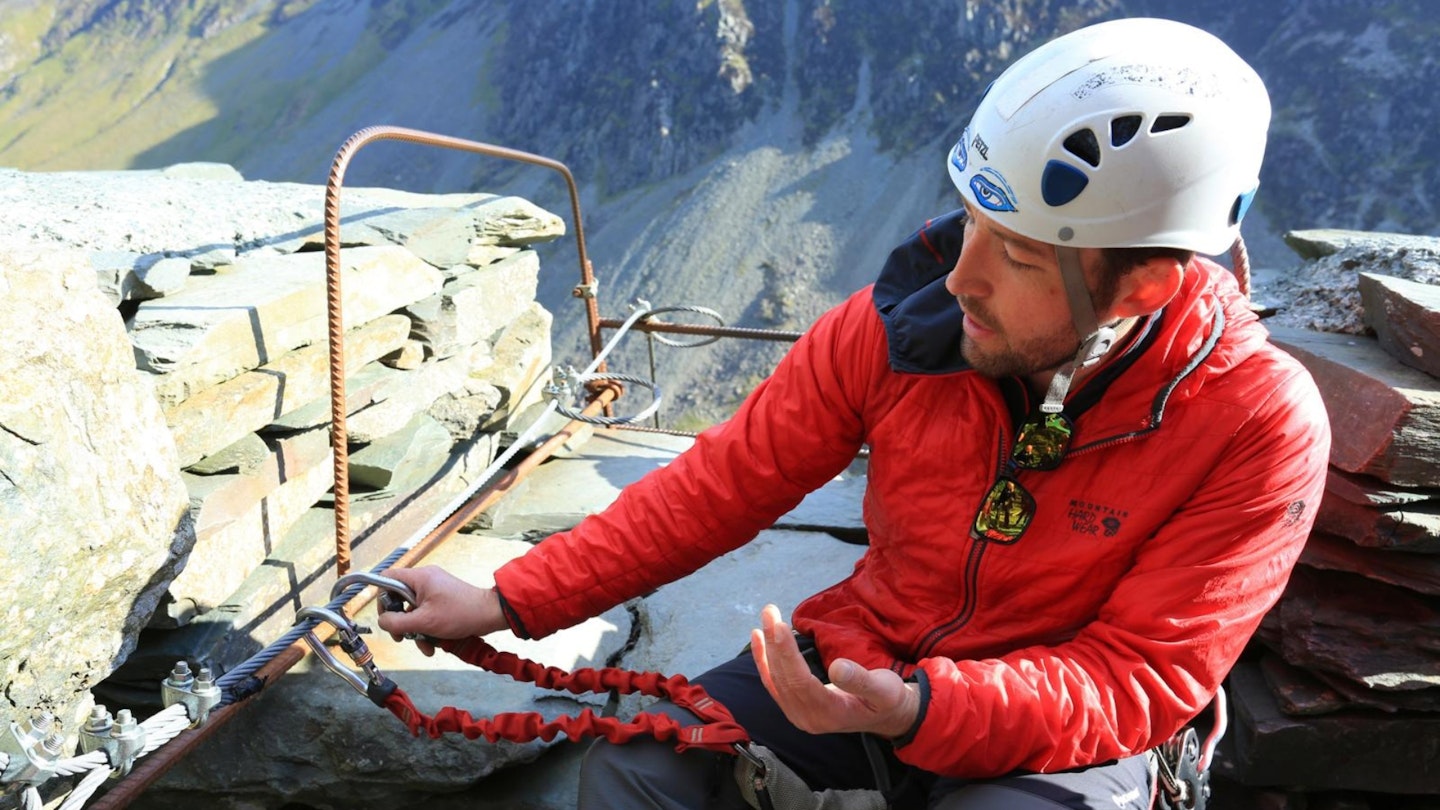
We leave the tunnel and continue towards the start of the via ferrata proper. Industrial remnants are everywhere, including the built-up walls that braced the inclines – man-made ramps the mine carts would have been hauled up empty and lowered down full of slate.
On safe ground, Tom gives us a further demonstration of how to use the via ferrata kits. They’re effectively two metal carabiner clips at the end of stretchy straps and attached to the harness via a shock absorbing device.
The important thing, he tells us, is to make sure there’s always at least one attached to the protective metal cable, both most of the time, and to keep our fingers out of the way. And with that, the airy stuff begins.
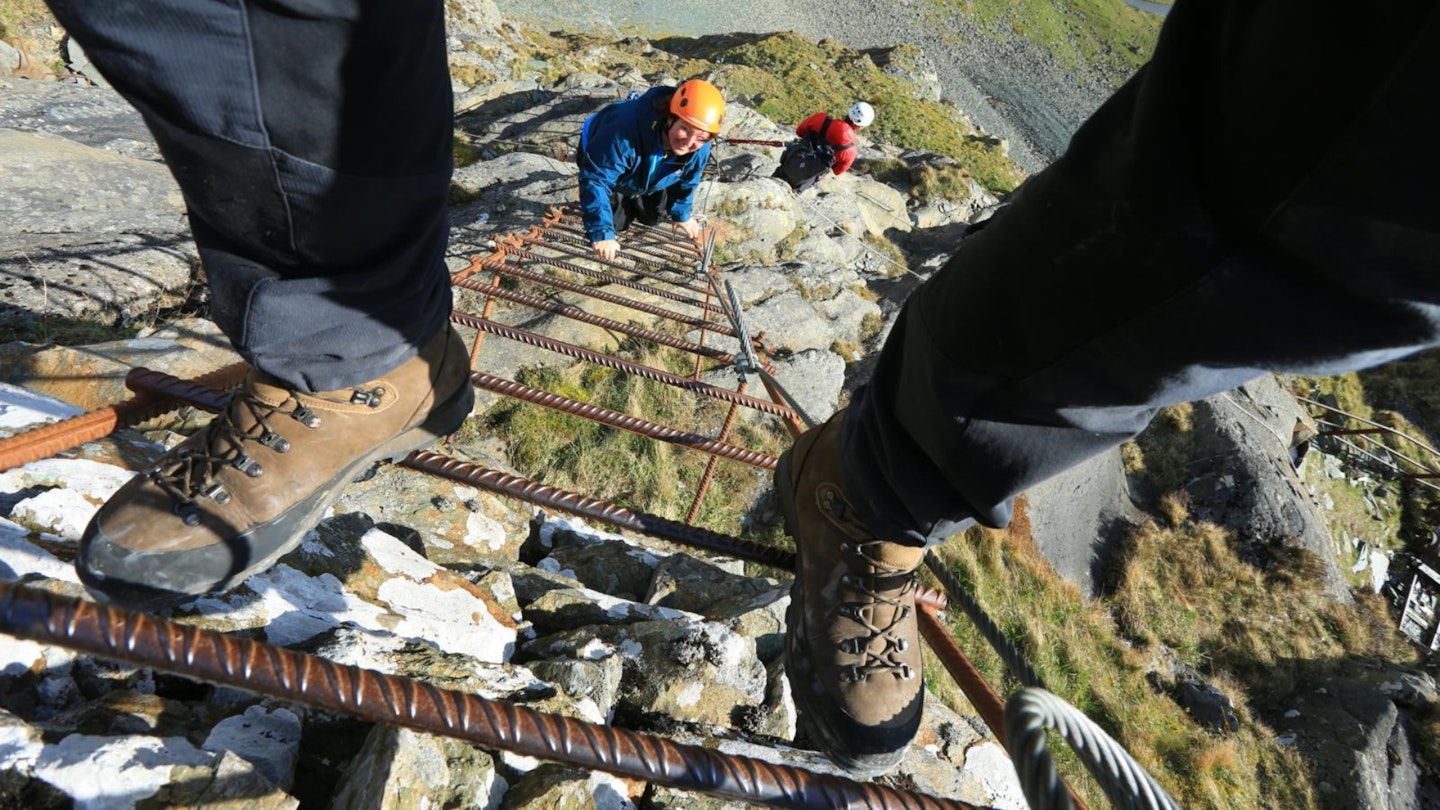
One at a time we clip into the cable and climb off the safe flat ledge onto stemples attached into the face below. These ‘stemples’ look like oversized iron staples, and provide hand- and footholds to assist our movement across the crag.
In order to prove the safety of the via ferrata kits, Tom gets us to lean back until the straps between our harnesses and the cables are taut and we’re leaning right back over the abyss… and then let go of the stemples. This is a nervy moment, with nothing but thin air and a long drop beneath us.
We’re leaning right back over the abyss
With the test of faith complete, we continue the descent, an easy but highly exposed warm-up. This is followed by a traverse across the face, and then a re-ascent to another easy going ledge. But the respite doesn’t last long. Bull Ghyll is up next. This cleft in the crags is deep, steep and full of loose scree.
There’s not a soft landing in sight. We don’t go down into it, but instead follow the cable out along the jaws of the ghyll, the position becoming increasingly exposed as we step out along the metal pegs attached to the rock.
It’s a prime photo opportunity, and one by one our merry troop of via ferrata-ers pose with big smiles, mock expressions of fear, and waving limbs above the airy drop.
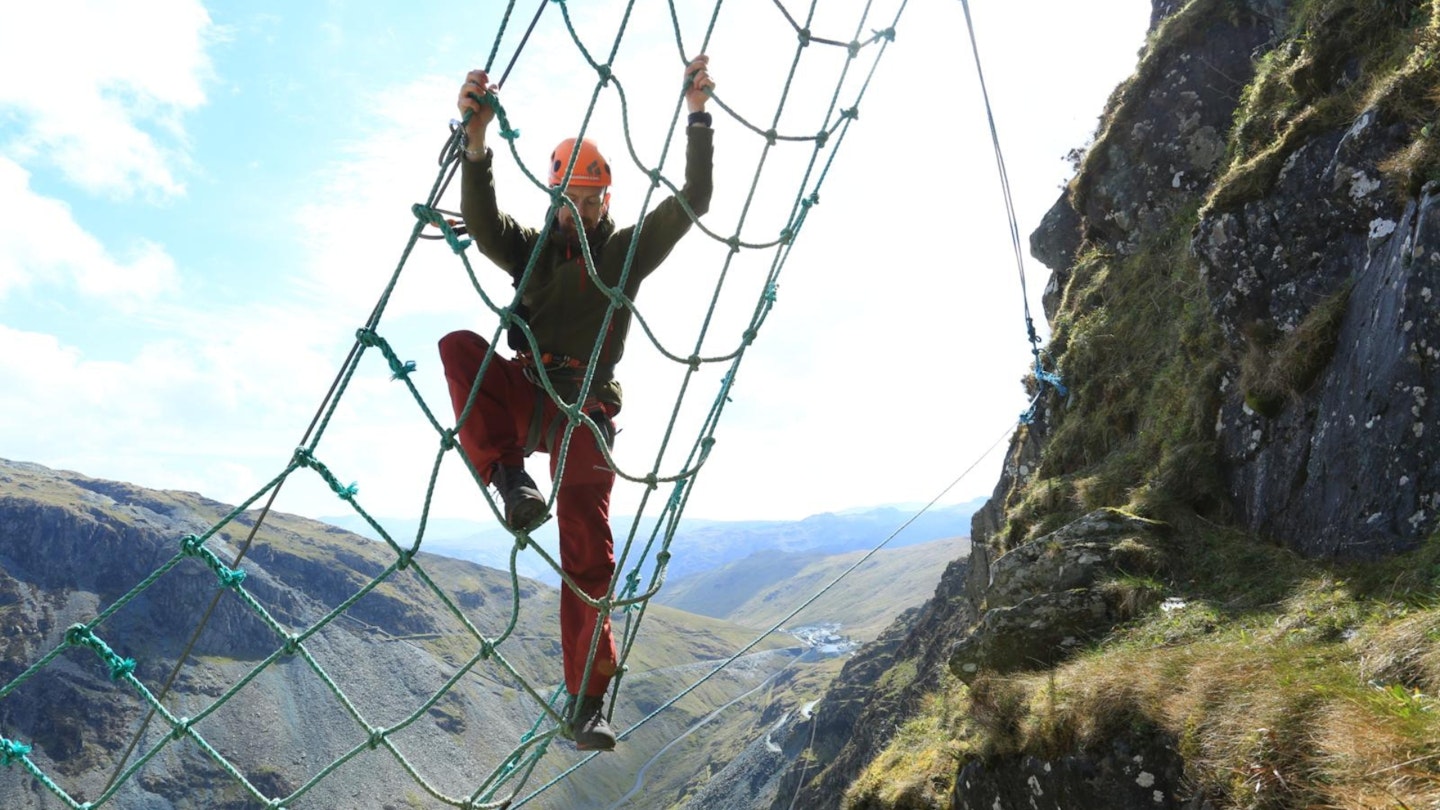
After Bull Ghyll the adrenaline pumping is dialled up another notch. A ‘Burma bridge’ extends out over the drop to the valley, although ‘bridge’ is a generous description. It’s four wires: a lower wire to walk on, one on either side to use as hand rails, and a fourth above to attach the pulley wheel onto – a safety measure to stop a slip becoming a plummet.
And the whole thing sways and trembles as we edge along it… or maybe that’s just us. Beyond the bridge a cargo-net takes us up to more familiar, and less wobbly, mountain territory.
When Honister opened its via ferrata it was criticised over concerns for Fleetwith Pike’s delicate flora and fauna. Tom highlights some of the efforts to reduce its impact.
The raised platforms we’re walking on protect the vegetation below, while parts of the crags are strict no-go areas – one of the reasons visitors must always be accompanied by a guide. And the via ferrata itself isn’t all about the thrills.
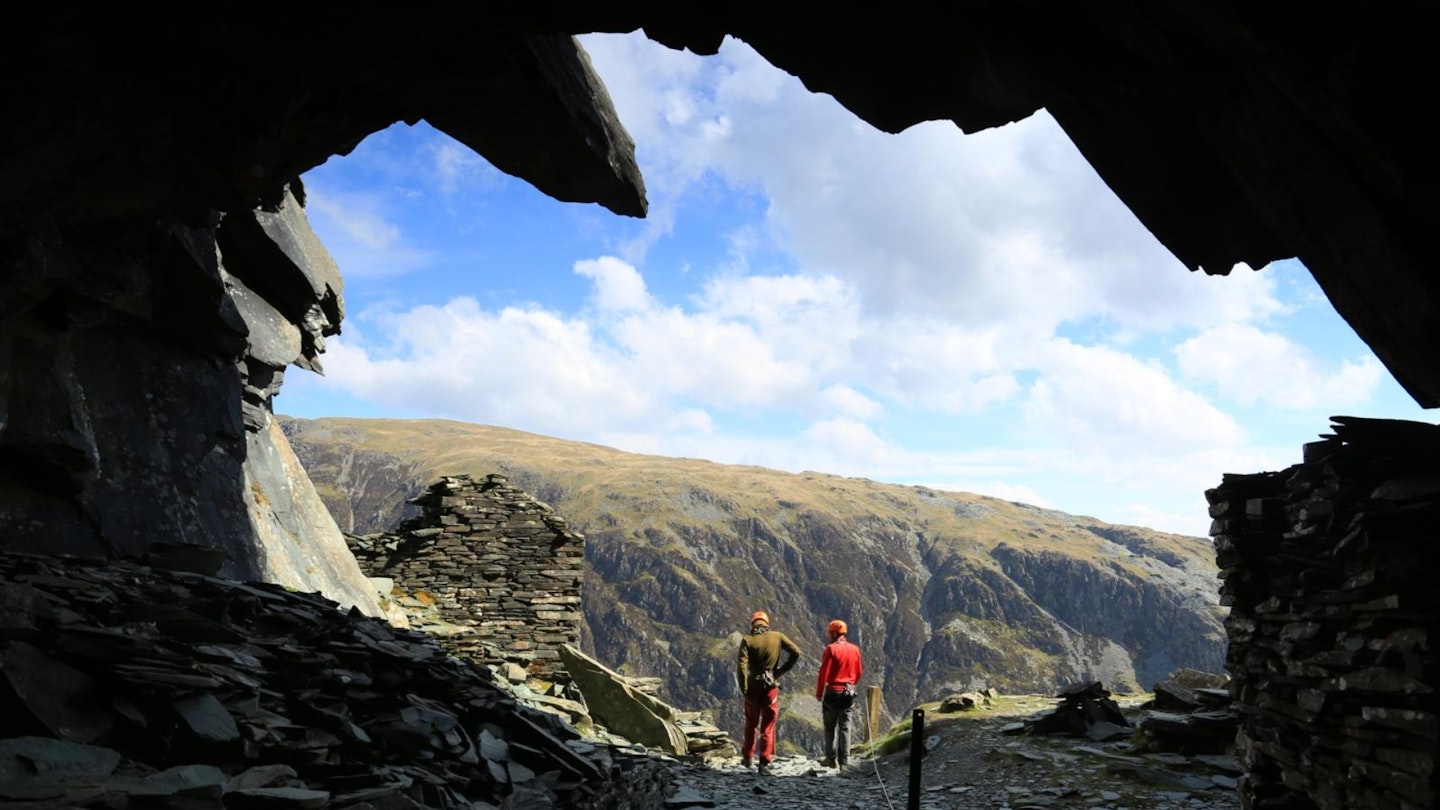
As the tour nears its end, more remnants of the crags’ mining history are revealed – a wide tunnel that served as a mining village; an old open-cast quarry; the ruins of a miner’s hut; a still intact pack horse bridge. The history is as fascinating as the via ferrata is thrilling.
Plans (which were approved in March 2025) are afoot to add a zip-line to Honister’s offering – a proposal that has caused yet more controversy. But the crags of Fleetwith Pike have been altered and influenced by human activity for centuries – as has the Lake District as a whole.
What’s clear from our experience is the people of Honister live and breathe the fells, and they don’t just want their visitors to leave with an elevated heart rate and a gift shop souvenir, but with an appreciation and respect for the area’s natural and human history.
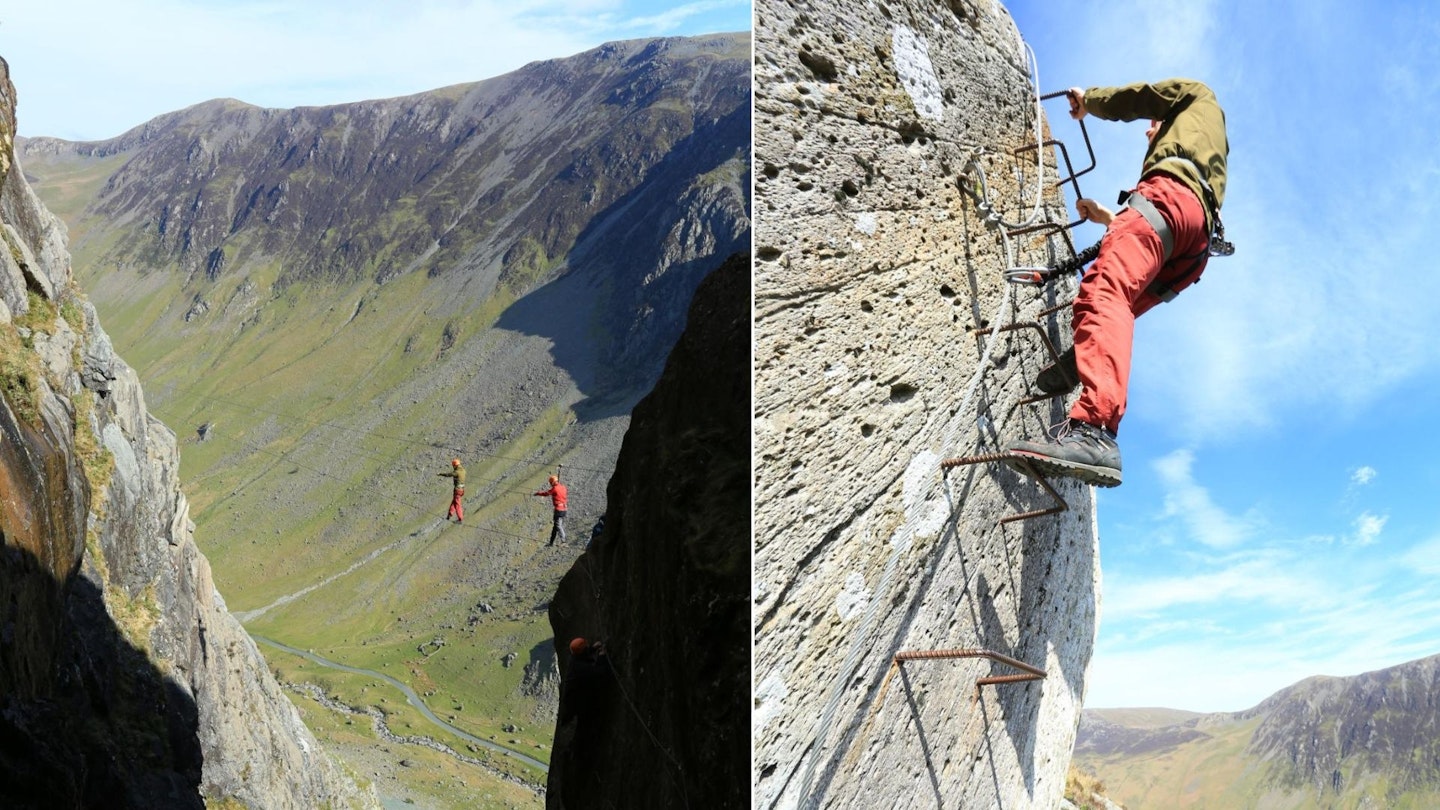
Are there any other via ferratas in the UK?
Vertical Descents
Based in Kinlochleven near Fort William and Glen Coe, Vertical Descents’ guided via ferrata climbs beside and above the The Grey Mare’s Tail – Scotland’s third highest waterfall.
How Stean Gorge
Set in the heart of the Yorkshire Dales, this course of cables, ladders and beams takes visitors on a high wire adventure above gushing water through the limestone ravine of How Stean Gorge.
About the author
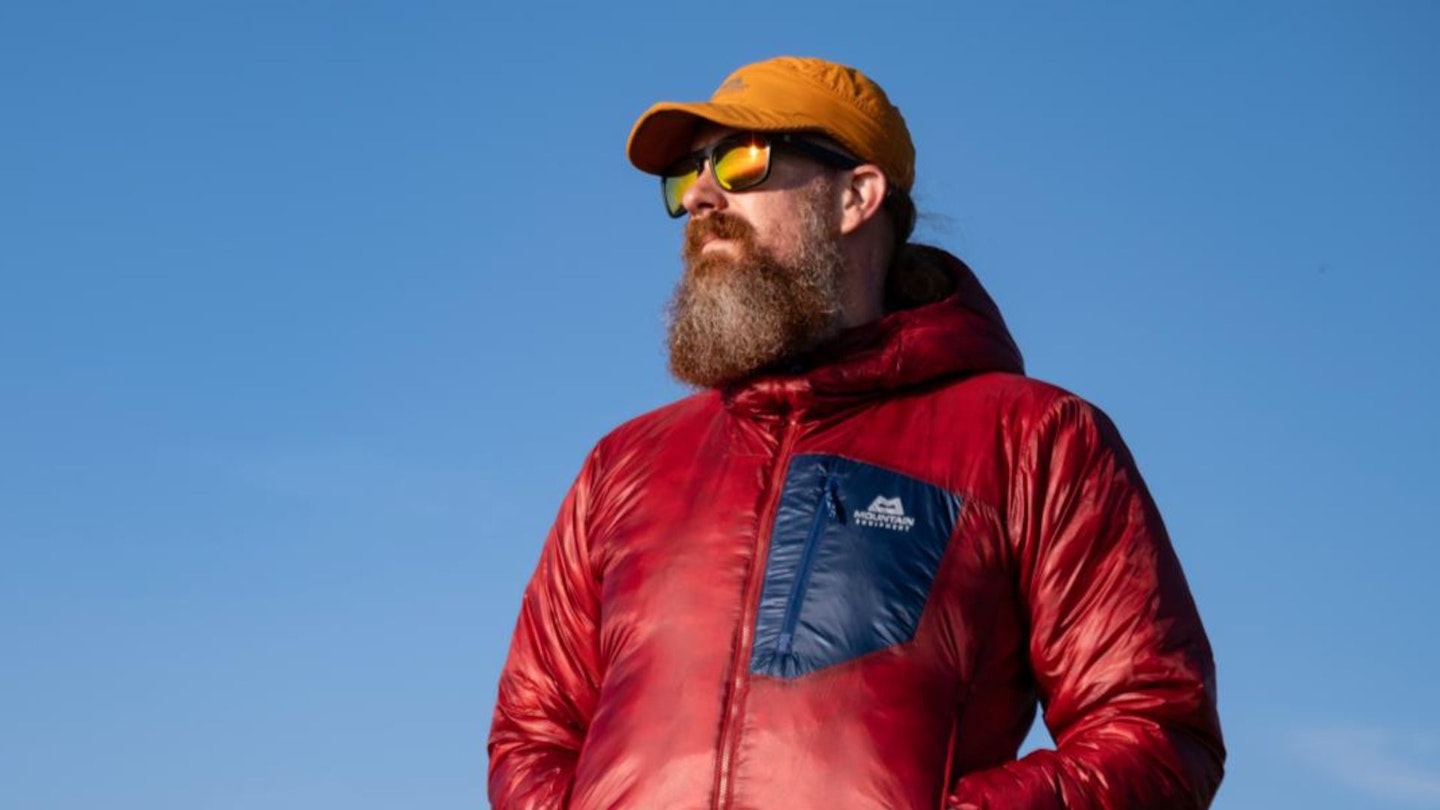
Ben Weeks has been with Trail magazine for over 10 years and is our main point of contact for all gear reviews. As well as being a hugely talented writer and photographer, Ben is also a qualified Mountain Leader and Climbing Instructor.
